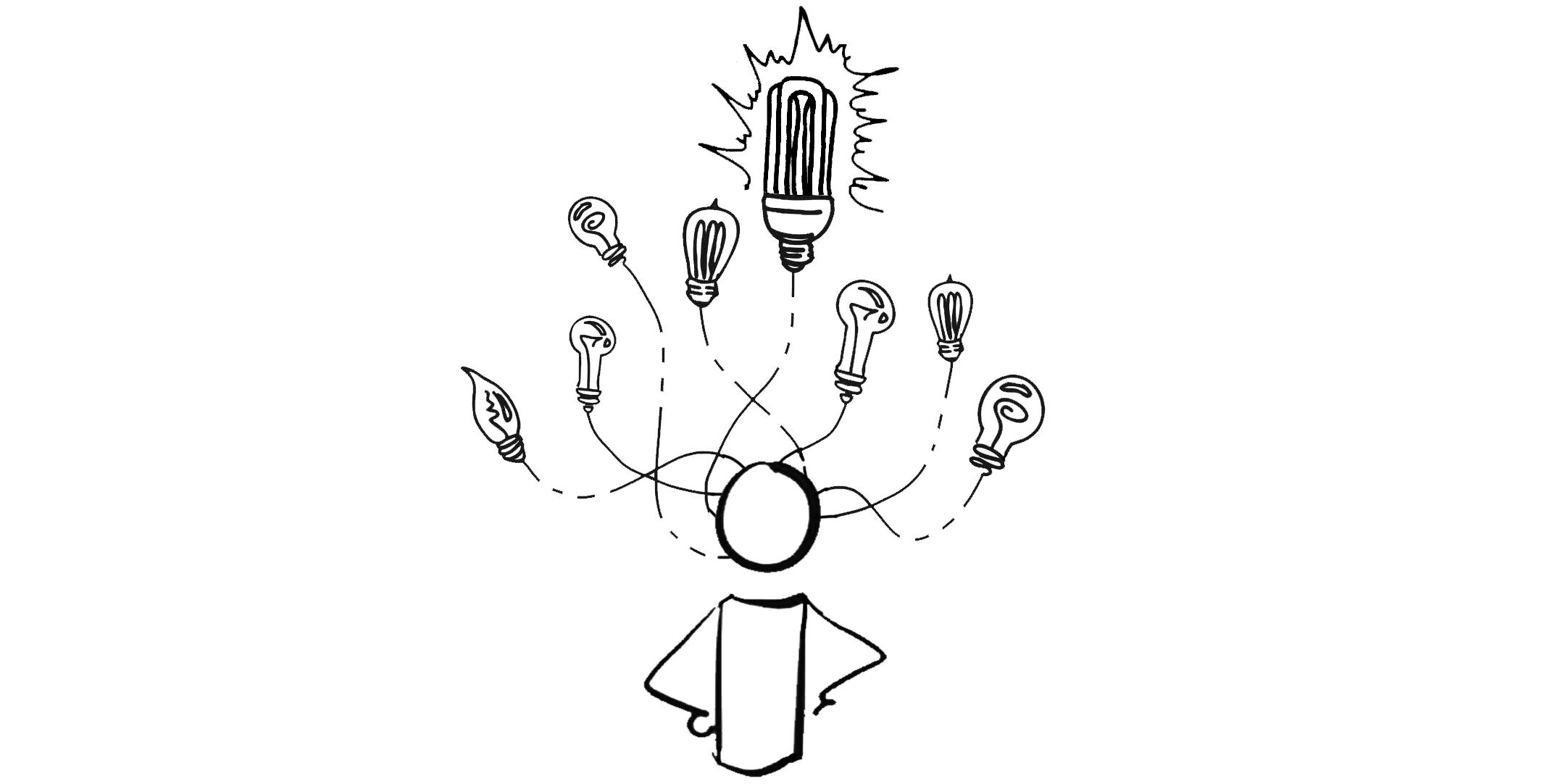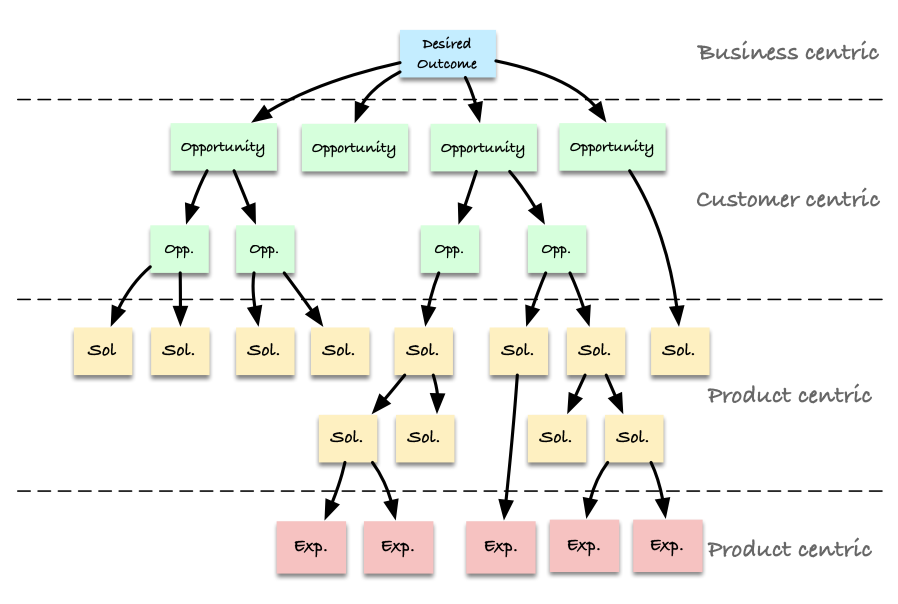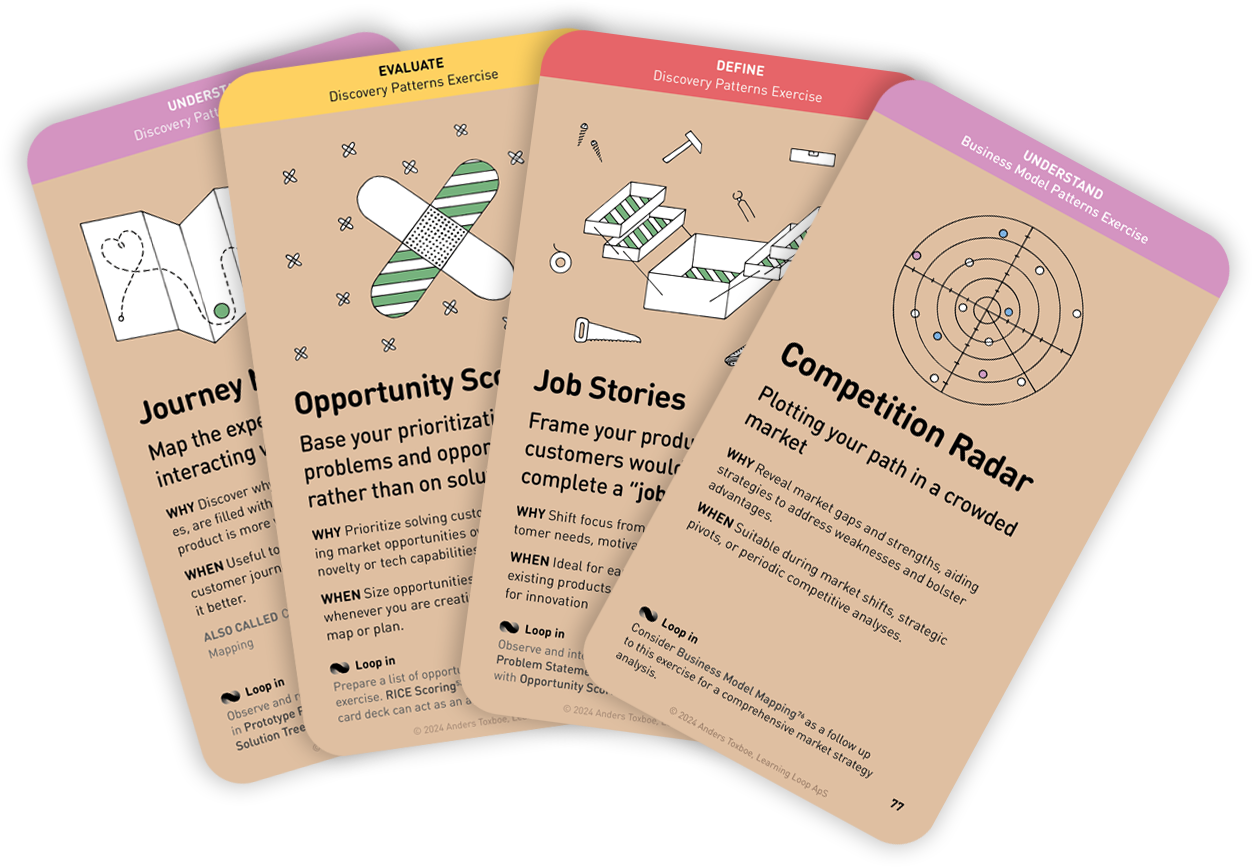Workshop Exercises: Understand
Opportunity Solution Tree Mapping
Map how product features are linked to customer research and desired outcomes

Why: Map desired outcomes to customer needs and potential product features to align product development with customer needs
When: Useful to bridge the gap between customer research and product development
Instructions for running this play
- Let the decider frame the Desired Outcome (a measurable result for the product preferably negotiated with the business every quarter). This is your design challenge.
- Generate opportunities (problem statements identified in customers through research). Split up opportunities if they are too abstract to brainstorm solutions for.
- Generate solutions that both meet the need of the customer opportunity, but also helps the Desired Outcome.
- Prioritize Opportunities (not Solutions) by market size (how many customers does it impact & how often?). Also consider the competitive landscape, your company’s vision, mission and objectives, and the importance and satisfaction for customers if needs are met.
- Generate experiments to test each proposed solution. Don’t just test one solution, but multiple to allow for compare and contrast decisions rather than whether-or-not decisions.

Tips to perfect this play
Master and adapt the play to fit your context and needs.
Tip: Force the problem space
Try exploring the problem space before diving into potential solutions
Tip: No rules, really
It is OK to start generating solutions rather than opportunities – as long as you connect each solution with customer opportunities (backed up by research) and opportunities with the desired outcome. Connecting the dots vertically is the true power of the tool.
Tip: Ongoing effort
Creating an Opportunity Solution Tree is not a one-time effort. It should be continuously refined as your research body and understanding grows. Book a follow-up at least 3 months after.
Tip: A shared understanding
Maps are for creating a shared understanding across disciplines – between you, your team, and your stakeholders. Invite everyone interested in joining.
A collection of workshop exercises that will help you ditch dull meetings and facilitate with confidence. It will help you master the design process and have more productive time with your team. The card deck will be ready for purchase in the end of 2026 and is now undergoing rigorous testing.
Reserve your deck!- Product Talk - origin of the tool by Teresa Torres
- Opportunity Solution Tree Template
- Opportunity Solution Tree exercise by Jerry Becker

